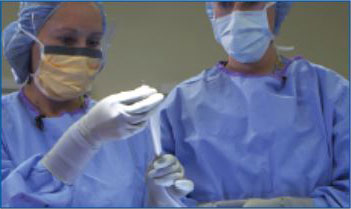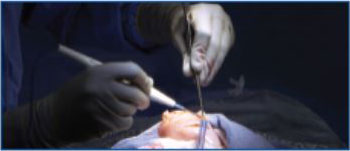Energy Generating Devices: Precaution Keeps Patients and Staff Safe in the OR


Most surgeries today utilize one or more instruments that function on electrical power.
Continued technological advancements in these instruments have made a significant impact on optimizing procedures, such as shorter operating time, more precise cutting and coagulating, easier access to anatomy, and more. However, these technologies are not without potential complications and risks to patient and staff safety.

Reducing potential hazards related to energy-generating devices begins with proper precaution protocols. Fire is a considerable risk related to powered instruments, with potentially devastating results. Fluids containing volatile compounds, oxygen, drapes, sponges, gauze, dressings, and gowns are all ignition dangers when brought into contact with a powered instrument.
Pre- and Postoperative Equipment Check
The perioperative staff plays an important role in hazard prevention. Inspection of electrosurgical units, instruments, accessories, and cords should take place both pre- and postoperatively to check for damage that could affect the safe operation of the instruments. Any damaged items should be removed from use and reported to staff responsible for equipment maintenance. Perioperative staff must also be trained on safe practices for equipment operation and staff must stay up to date on safe practices for any new technology introduced into the operating room.

Raising Awareness of Intraoperative Risks
While proper equipment maintenance is vital to minimizing risk of injury to patients and staff, attentiveness to safety protocols during intraoperative use of electrosurgical equipment is equally important. For instance, while it may be tempting to reduce distractions in the OR by turning off alarms, it is imperative that machine alarms remain active as the purpose of the alarms is to alert staff to potential equipment failure or patient emergency.
Any time a surgical case includes electrosurgical devices, the perioperative staff should perform a preoperative skin assessment of the patient, noting any pre-existing injuries, and a post-surgery assessment should also be conducted to confirm no injuries occurred during the procedure.
Additional intraoperative safety protocols, including maintaining instrument tips, use of dispersive pads, risk of antenna coupling, prevention of alternate site injuries, and more, are outlined in the study guide included in this education module.
Education, planning, and risk awareness are key to reducing risk of injury and enhancing patient and staff safety in surgery. For more information on use, care, and maintenance of energy-generating devices, check out the perioperative education module, Energy-Generating Devices: Safety Precautions, part of the CineMed AORN Online Perioperative Education program available at https://cine-med.com/aornonline.

